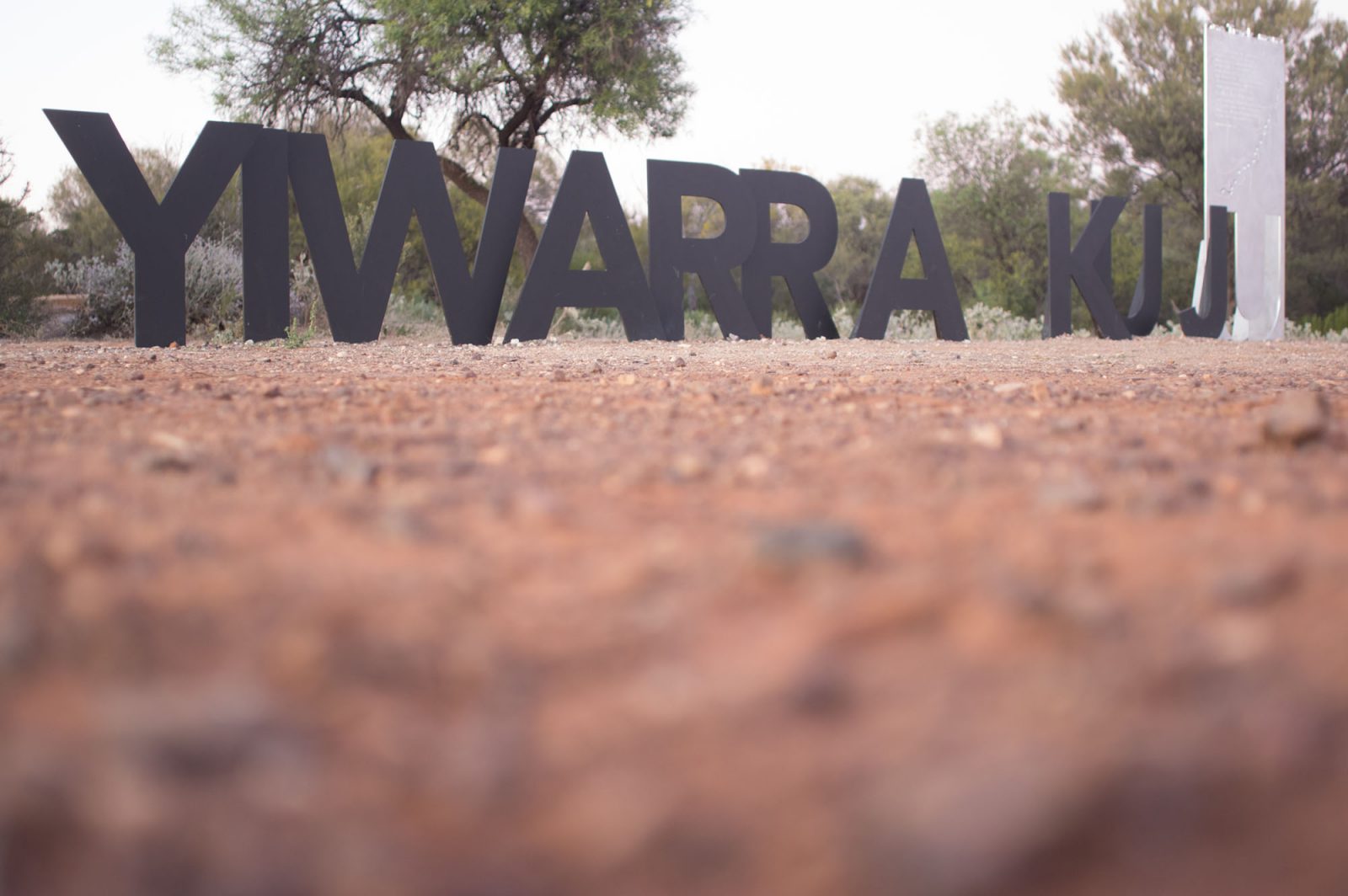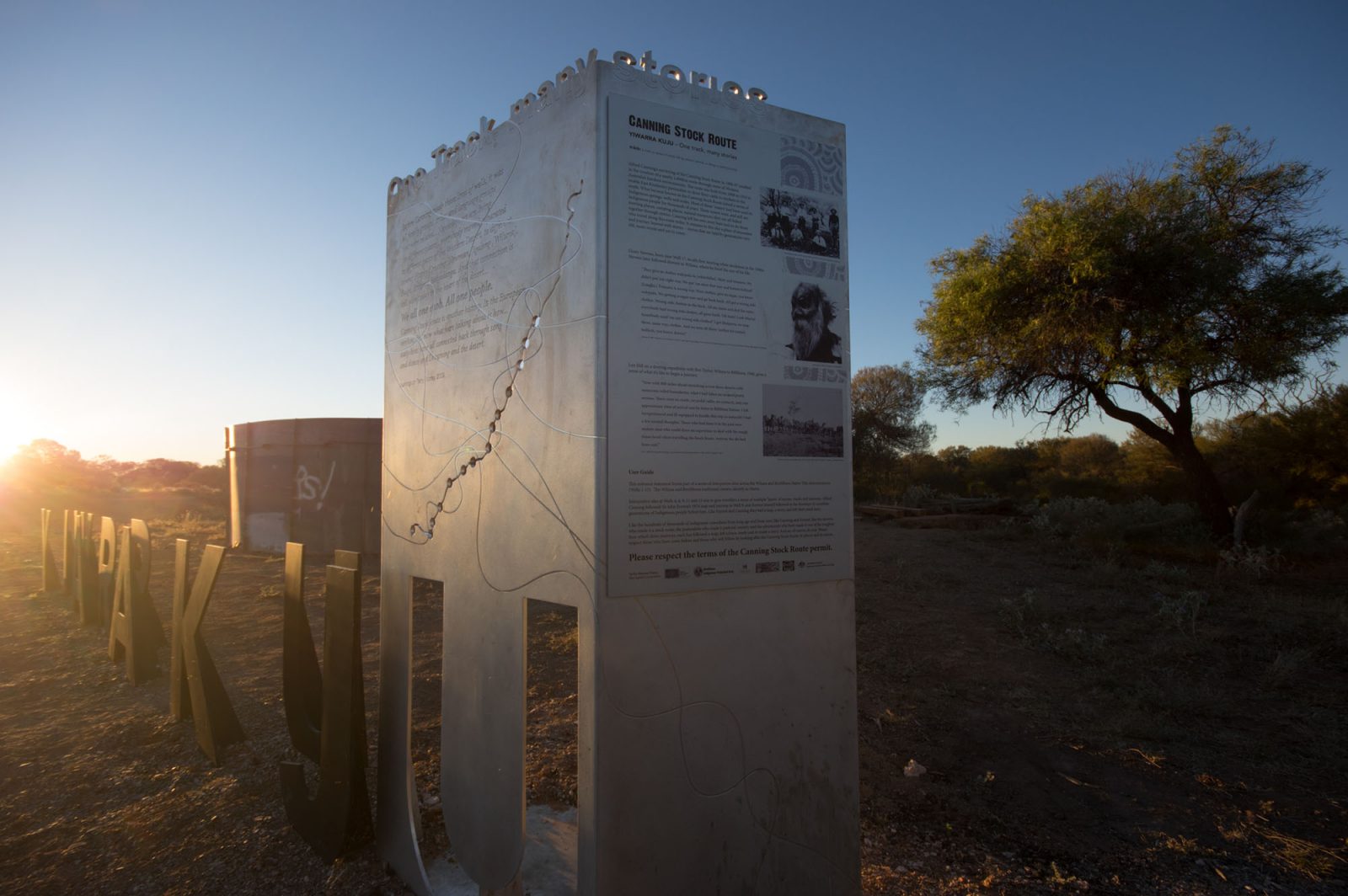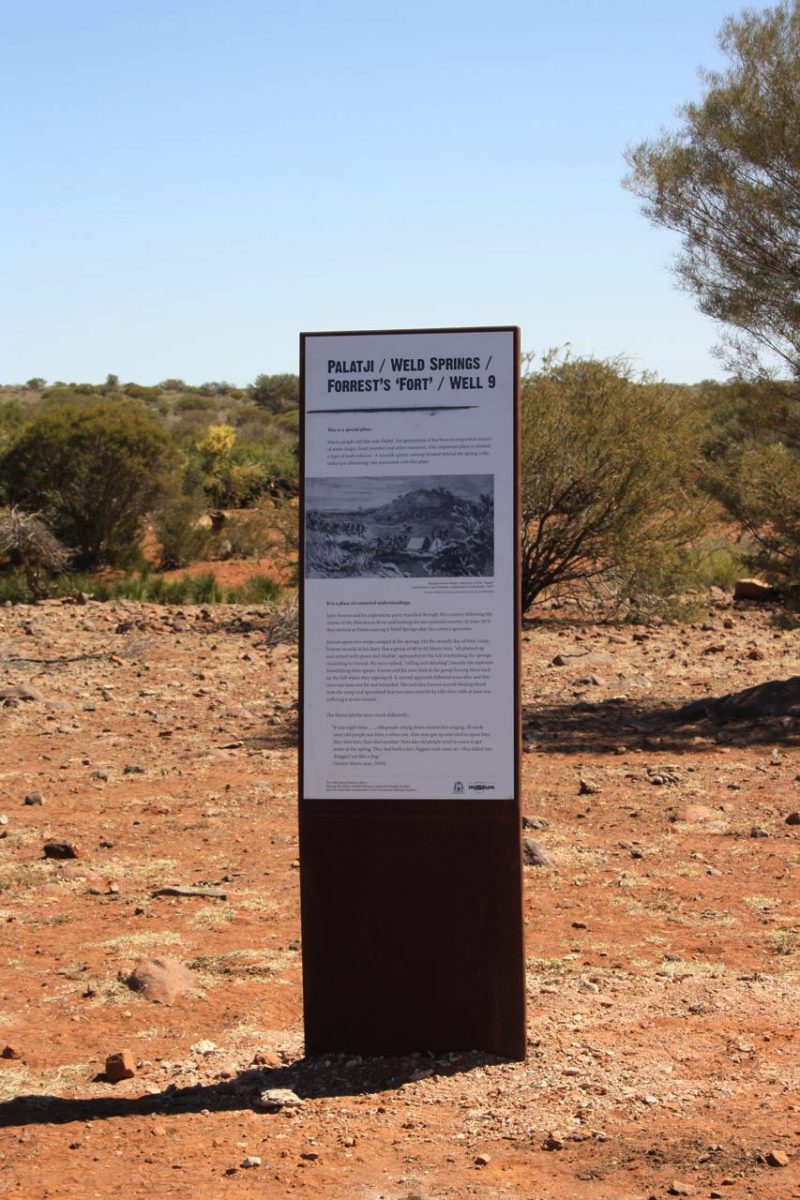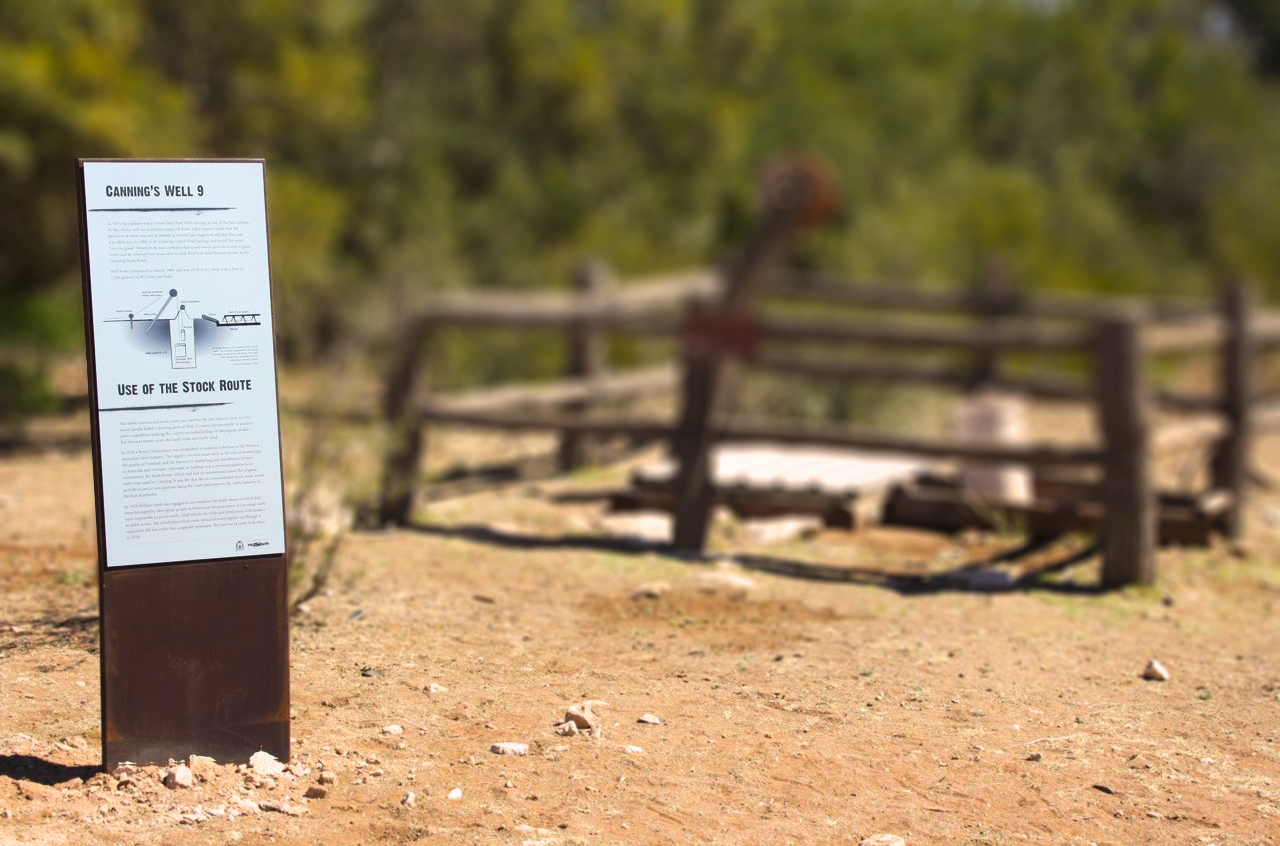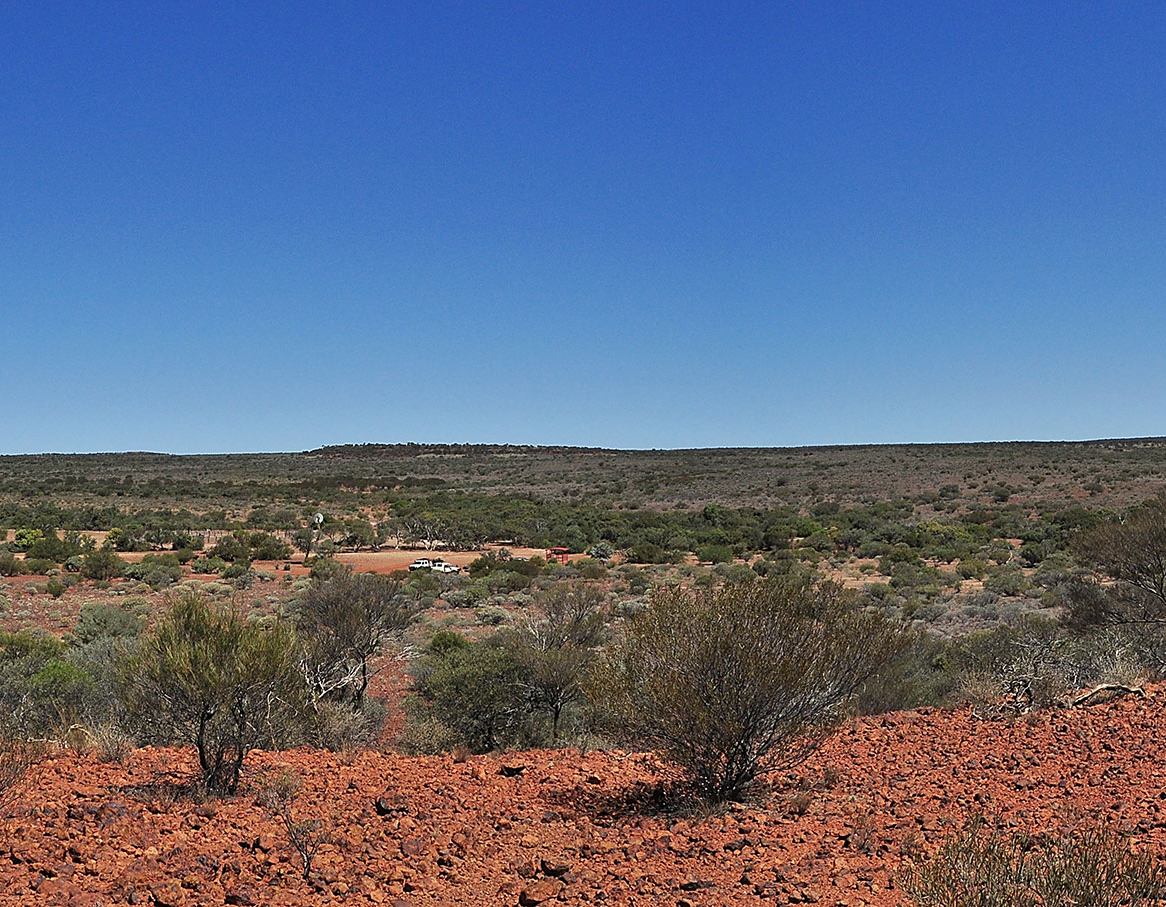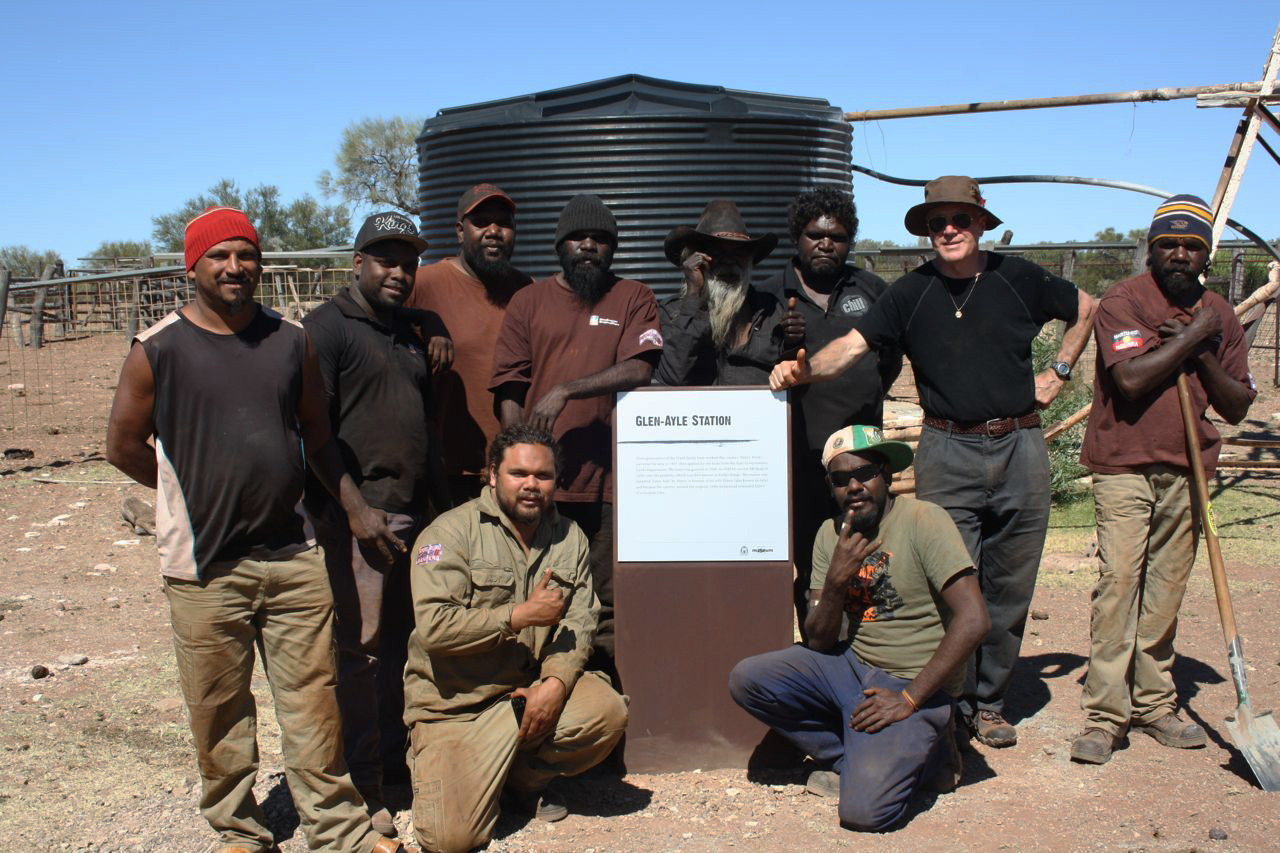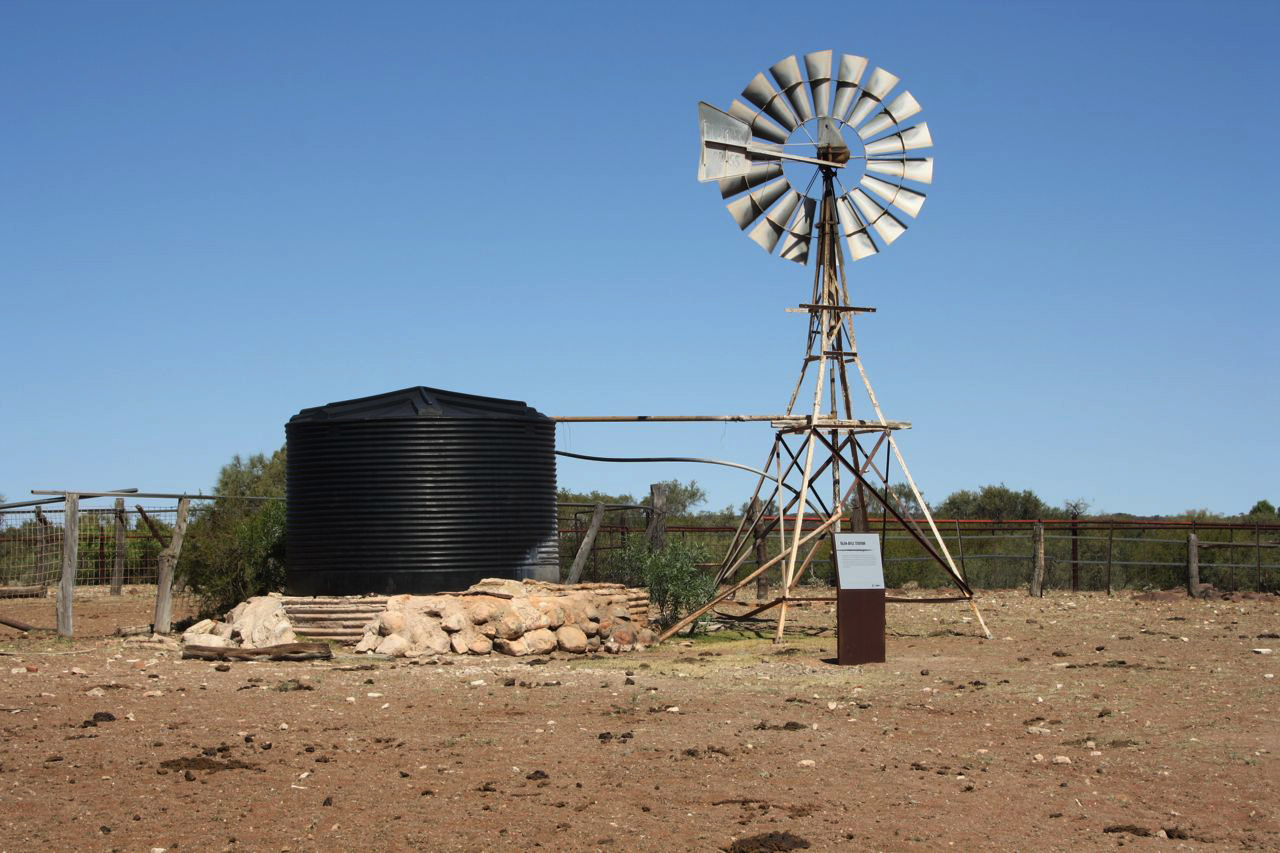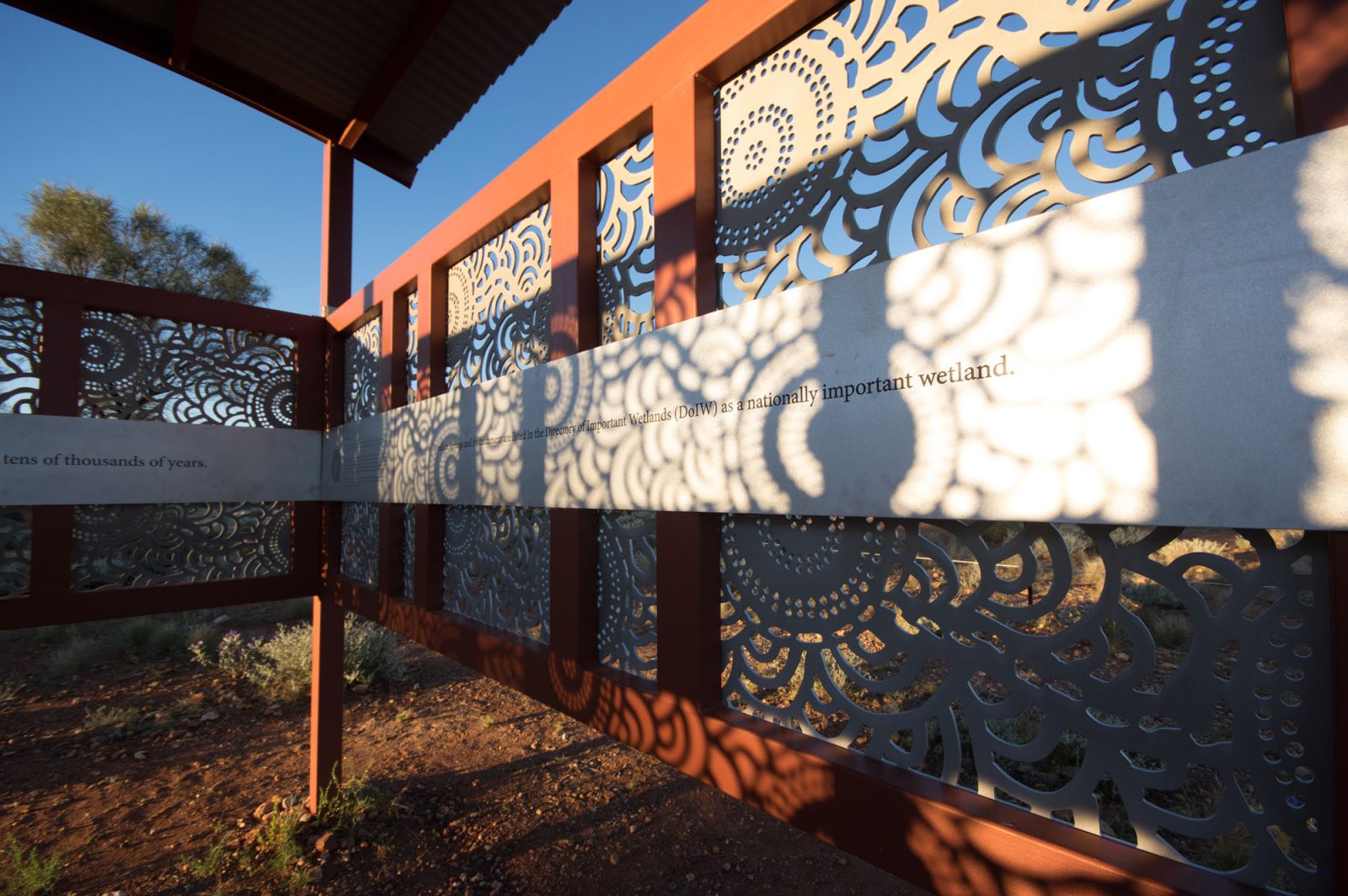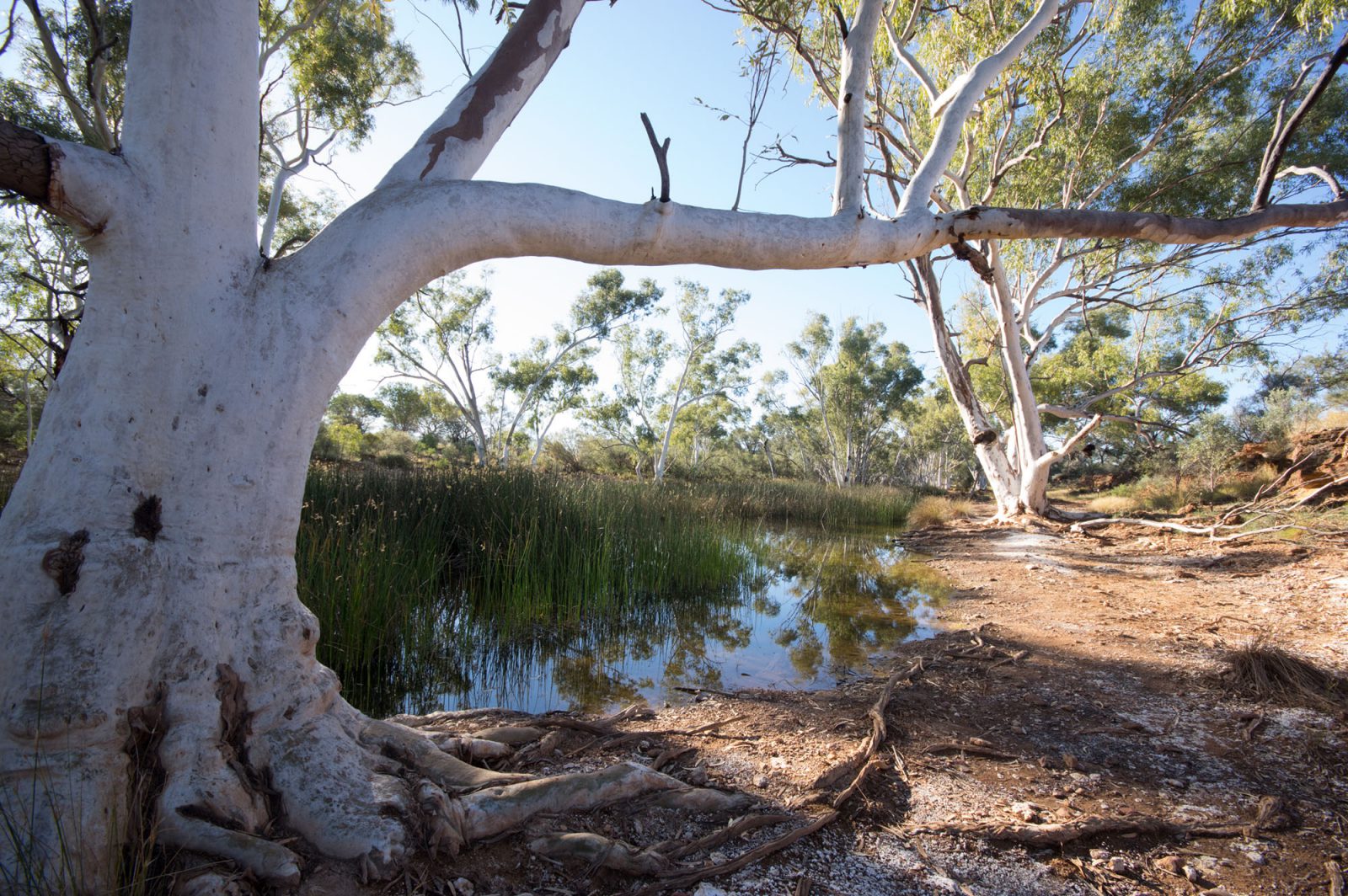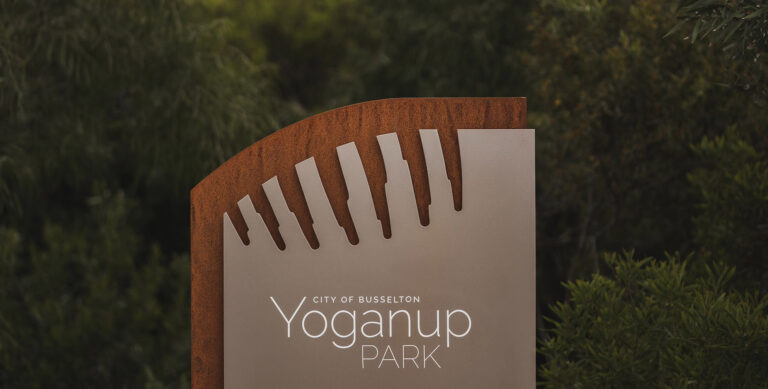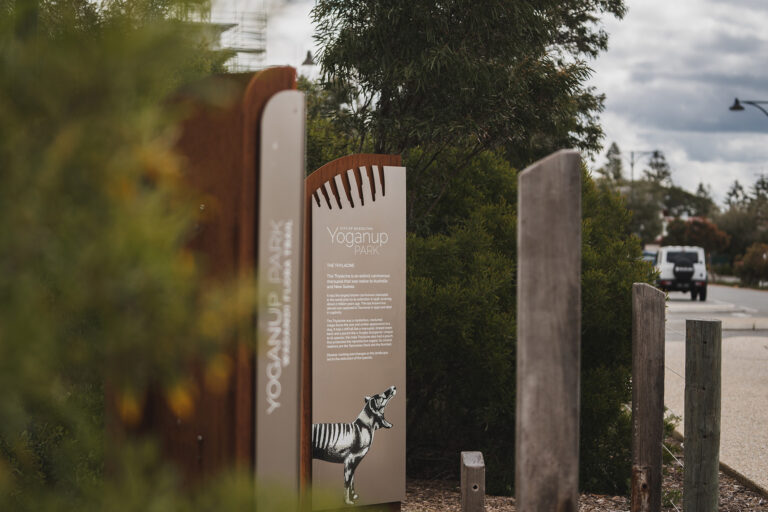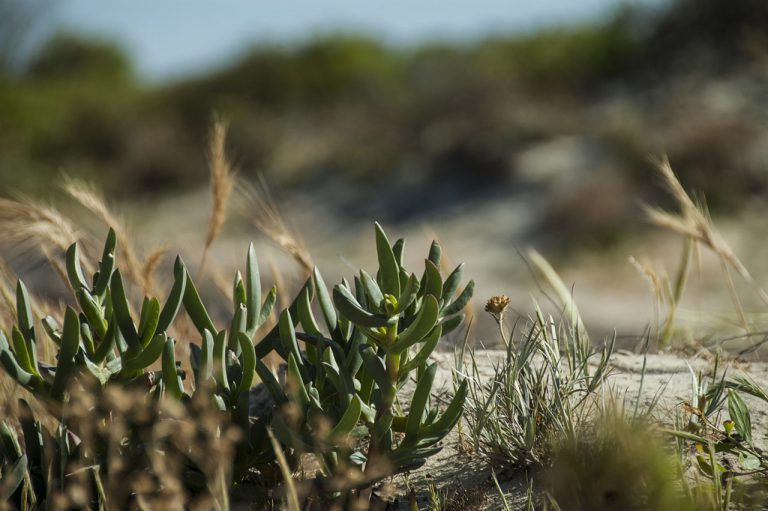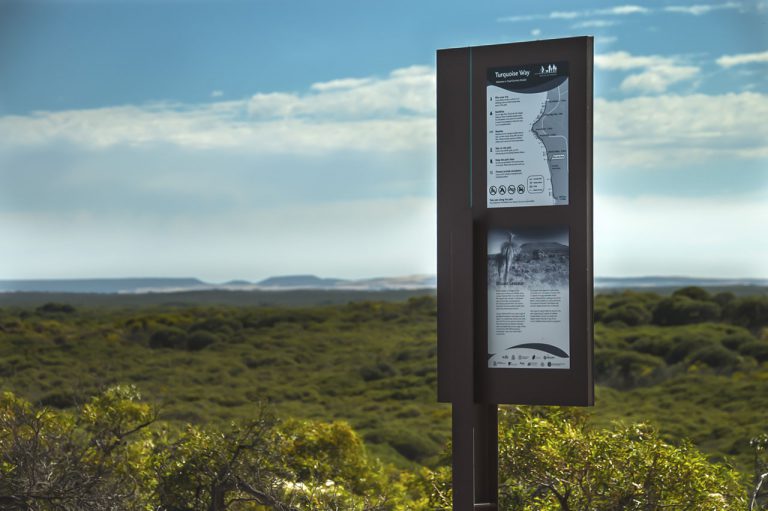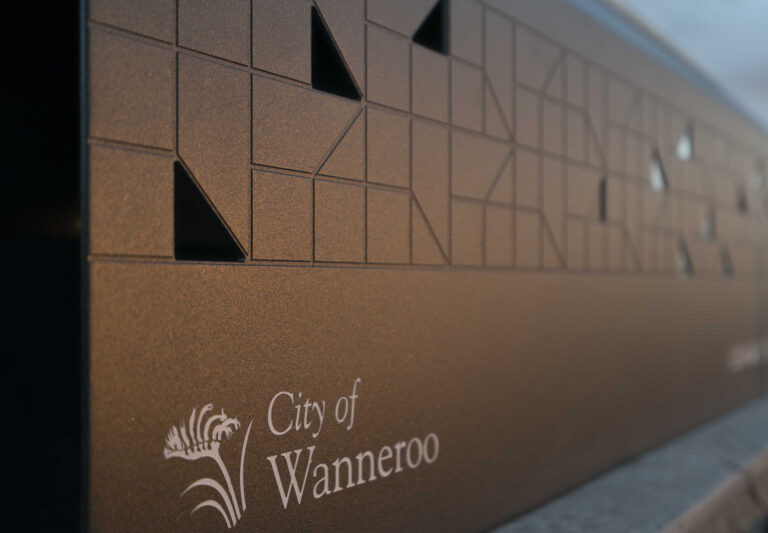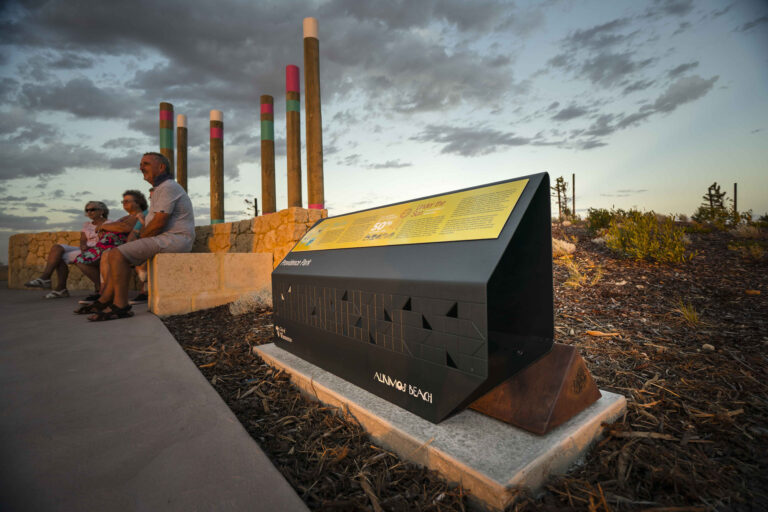The Canning Stock Route, built by Alfred Canning in 1910, travels through some of Australia’s harshest environments for around 1800 kilometres.
The Canning Stock Route joined a series of natural springs linked together by stories that have been used by Aboriginal people as meeting, camping and ceremonial places for thousands of years. This interpretation gives the local Martu people a voice to finally share their side of the story of the Canning Stock Route.
“Yiwarra Kuju” as the track is known by the traditional owners, means “one track – many stories”. This message forms the entry statement that appears to rise from the ground, symbolising the relationship and connection the traditional owners have with the land.
A local Aboriginal artist was commissioned whose artwork, traditionally referencing the natural desert springs, has been interpreted into cut-through aluminium screens, adorned by a lineal strip of interpretation. The changing light passing through the screens creates changing shadows on the earth, reminiscent of earlier forms of Aboriginal drawings in the sand.
Since the installation and due to the involvement of the Martu People, whose stories inspired this project; an increased sense of ownership of this area has been acknowledged by the traditional owners.
